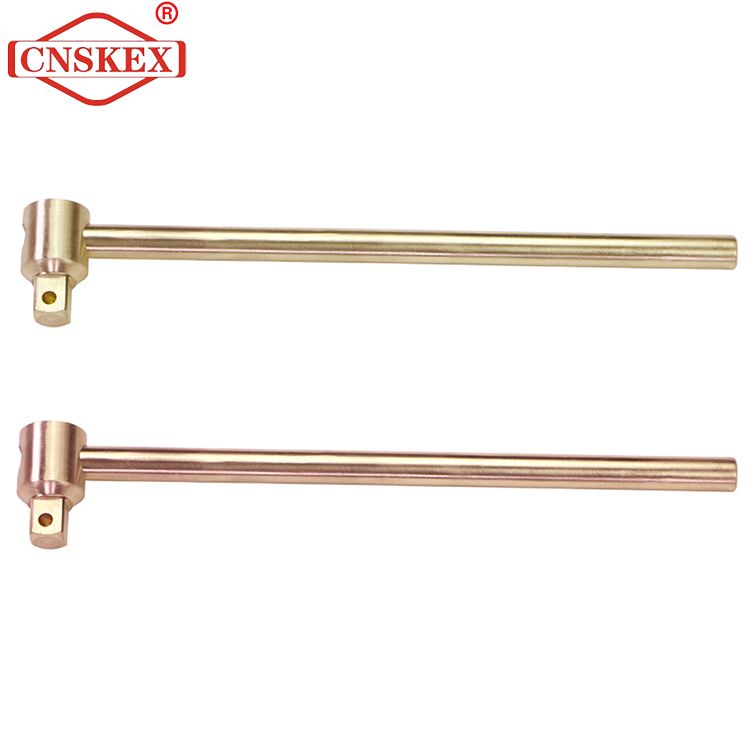Nov. 06, 2023
Tools
In industrial settings where explosive gases and flammable materials are prevalent, safety is of paramount importance. Non-sparking sockets and accessories are critical tools that play a pivotal role in maintaining a safe working environment. These specialized tools are designed to prevent the generation of sparks, significantly reducing the risk of accidents, fires, or explosions. In this article, we will explore the significance of non-sparking sockets and accessories and their applications in various industries.
Understanding Non-Sparking Sockets and Accessories
Non-sparking sockets and accessories are a subset of non-sparking tools specifically tailored for tasks that involve fasteners. These tools are engineered to minimize friction and heat generation when they come into contact with hard materials, reducing the potential for sparking. The materials used in the construction of non-sparking sockets and accessories typically include copper alloys, aluminum bronze, and other non-ferrous metals, which have low spark-producing potential.
Applications in Various Industries
Oil and Gas Industry: The oil and gas industry often involves operations in hazardous environments where the presence of flammable gases or vapors is a constant risk. Non-sparking sockets are used extensively for tasks such as tightening or loosening bolts and nuts on pipelines, drilling rigs, refineries, and offshore platforms. Accessories like non-sparking ratchets and extensions are essential for reaching confined spaces and reducing the risk of sparks.

Chemical Industry: Chemical manufacturing facilities handle a wide range of flammable and reactive substances. Non-sparking sockets are indispensable for equipment maintenance, repairs, and inspections in such environments, where safety is of utmost concern.
Mining Industry: Mining operations frequently expose workers to potentially explosive atmospheres, especially in coal mines. Non-sparking sockets and accessories are used for various maintenance tasks on heavy machinery and equipment to minimize the risk of igniting hazardous gases.
Aerospace Industry: In aircraft maintenance, where jet fuel is often present, non-sparking tools play a critical role in ensuring the safety of both personnel and valuable aircraft. Sockets and accessories are used for aircraft assembly, maintenance, and repair tasks.
Benefits of Non-Sparking Sockets and Accessories
Safety: The primary advantage of non-sparking accessories is their ability to prevent sparks in volatile environments. This significantly reduces the risk of fires and explosions, ensuring the safety of workers and the protection of valuable assets.
Compliance: Using non-sparking tools is often a legal requirement in industries dealing with hazardous materials. Compliance with safety regulations is essential, and non-sparking sockets and accessories help meet these standards.
Versatility: Non-sparking sockets and accessories come in various sizes and configurations, making them suitable for a wide range of applications. They can be used with standard hand tools, pneumatic tools, or power tools.
Durability: These tools are designed to withstand the rigors of industrial use and are built to last. They are often made from high-quality materials that are resistant to corrosion and wear.
Cost Savings: By preventing accidents, fires, and explosions, non-sparking sockets and accessories contribute to cost savings by reducing insurance premiums, equipment replacement costs, and downtime.
Conclusion
Non-sparking sockets and accessories are indispensable in industries where safety is a top priority. These tools not only protect workers from potential harm but also safeguard valuable assets and the environment. By preventing sparks in hazardous environments, they play a crucial role in maintaining safe and efficient operations. As industries continue to evolve, the use of non-sparking tools like sockets and accessories will remain an essential component of safety protocols, ensuring that workplaces remain free from the devastating consequences of fires and explosions.
If you are interested in sending in a Guest Blogger Submission,welcome to write for us!
All Comments ( 0 )